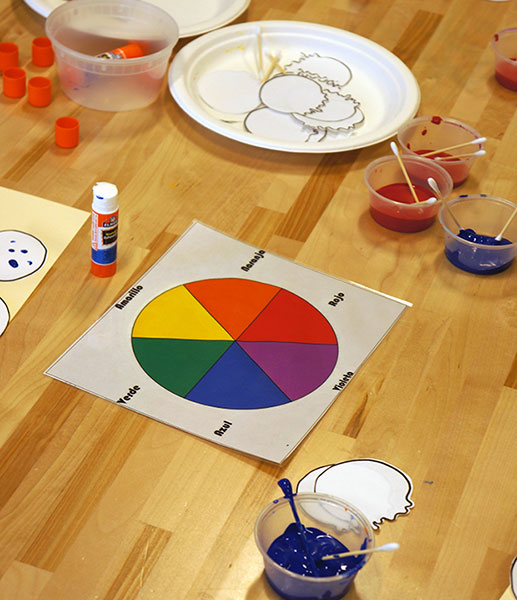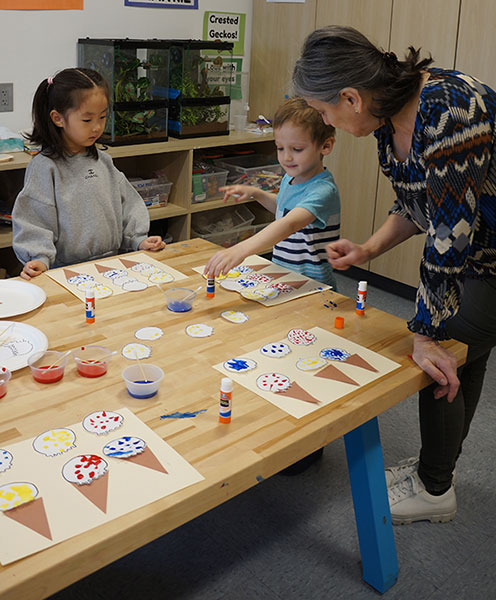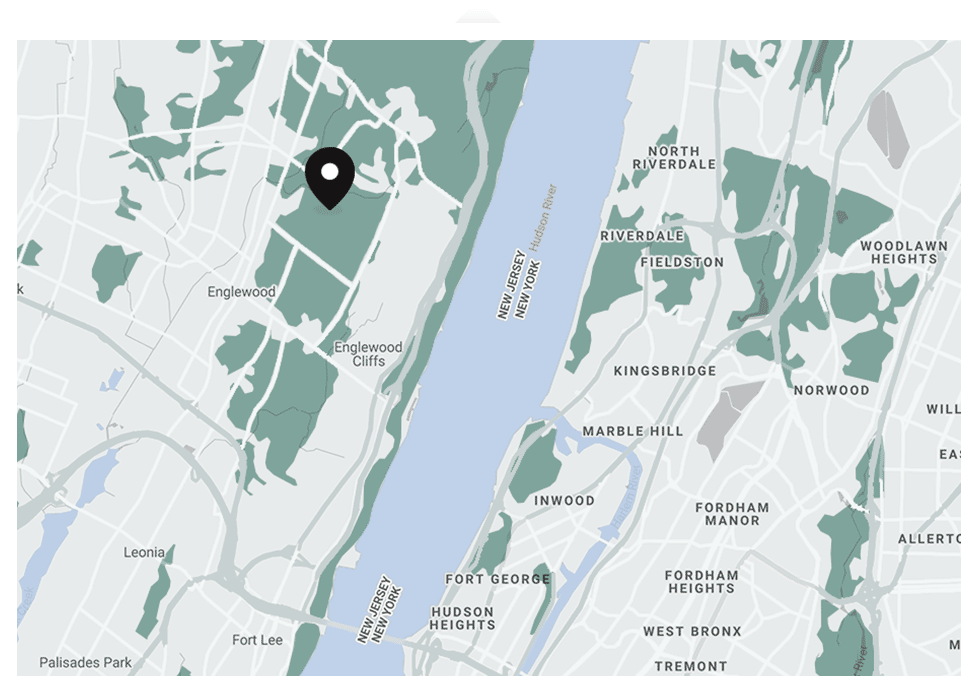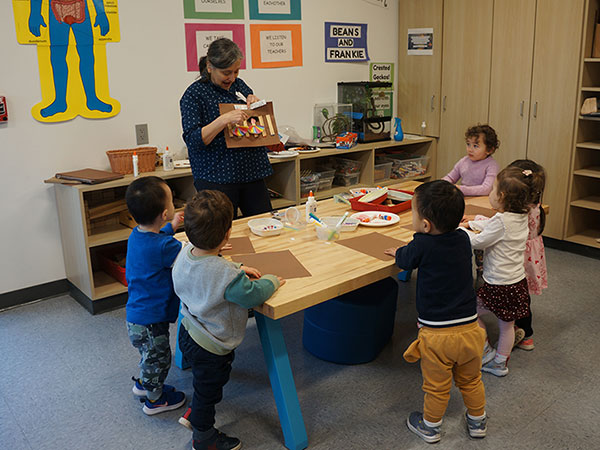New Chilton House program integrates foreign language instruction with the arts
Students in Chilton House, our early learning division, are learning Spanish in a very unique way, through a program introduced this semester called El Estudio. It’s helping to prepare them for learning other languages while building connections with different cultures and strengthening students’ listening, memorization, and problem-solving skills.
El Estudio, designed for our early childhood 2s and 3s/4s classes, combines art instruction and learning the basics of Spanish, the second most spoken language in our country and one of the easiest to learn for an English speaker. Exposing our students to a foreign language at an early age has a plethora of benefits as they progress in their educational journey and gives them a foundation to learn other Latin-based languages, such as French and Italian.
“We know that the way young children learn best is through hands-on experiences where the learning is embedded in engaging and interactive learning moments,” says Head of Early Learning Lauren Mactas. “We gave a lot of thought to how to best bring foreign language to young children in an innovative and dynamic way. By blending foreign language and the arts, we are bringing a new dimension to two learning areas that are naturally of interest and engaging to young children.”

In El Estudio, our students are learning Spanish in a way that is different from how we were taught in school and how young learners are being taught at other schools, many of which use the speak-and-repeat method and do not start language studies until kindergarten. In El Estudio, we make it a part of the arts curriculum for our 2s and 3s/4s students, allowing us to integrate foreign language instruction into joyful learning experiences that blend seamlessly into each class.
El Estudio instructor Victoria Greenway, a 3s/4s associate teacher who studied at the University of Barcelona School of Fine Arts and is a native Spanish speaker, works with our early childhood classrooms in our science and technology lab, called Exploration Alley, in half groups and facilitates art lessons where Spanish is part of the approach and how she communicates.
In a recent class, students worked on creating family portraits with popsicle sticks for bodies and construction paper for clothing. Greenway communicated the art project to the students in English but then used the English and Spanish words to describe mother (madre), father (padre), sister (hermana), brother (hermano), grandma (abuela), grandpa (abuelo), and more. Students are not reciting the words, but they are hearing them throughout the class as part of the conversation and, in turn, internalizing them.
“I have planned fun and age-appropriate art projects that will easily blend with simple Spanish words and expressions,” says Greenway enthusiastically. “I will add to our list of Spanish words each class, and by the end of the school year, I say the entire sentence in Spanish. For instance, I will start with ‘Would you like red, rojo?’ I will repeat this in future classes, and by the last class, I will say the entire sentence in Spanish, ‘Te gustaria rojo?’ It’s a very organic approach to learning a foreign language.”

Mactas took the time to conceptualize what the El Estudio program would look like, what she wanted the outcomes to be, and how best to facilitate it so children would get the most out of it before launching the program in February 2023. “Because our Spanish instruction is meeting the child’s needs and giving them the tools to engage in arts activities, they will remember it,” she says. “Art happens all the time in our classrooms, but this is a more formalized art experience that integrates a new skill in a natural and impactful context.”
This important program helps to highlight our diverse community and build connections between students. “When children learn a language like Spanish, they are making connections between themselves and the people around them. And, they begin to see the presence of Spanish in signage, on television, in music, and in conversation, and build a deeper awareness of how a diverse range of languages and cultures enrich our communities,” says Mactas.
Lifelong learning is at the heart of The Elisabeth Morrow School experience
Whether it’s learning an instrument, participating in a lively class discussion, or building a prototype with a laser printer, students continually cultivate their interests, expand their skills, and develop their passion for learning throughout their early childhood, lower school, and middle school years at EMS.


